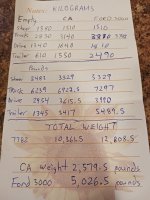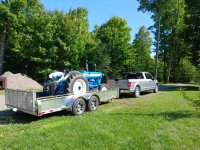TMGT
Elite Member
Lighter duty trailer with proper axle placement would be perfectly fine, actually safer than the equivalent tag trailer. While the options for lighter goosnecks aren't as many, they do exist.I don't believe you have the springs or rear tires to handle a gooseneck SAFELY. While it's possible for some 1/2-ton trucks to tow certain gooseneck trailers, it's not generally recommended due to potential safety and mechanical issues. Gooseneck trailers typically exert a higher percentage of their weight onto the truck's hitch, potentially exceeding the truck's payload and tow ratings even if the overall trailer weight is within limits.
Here's why:
- Higher Tongue Weight:
Gooseneck trailers, compared to bumper-pull trailers, place a larger percentage of their weight (20-25%) on the truck's hitch. This can quickly overload the truck's payload capacity, even if the overall trailer weight is within the truck's tow rating.
- Payload Capacity:
A half-ton truck's payload capacity (the amount of weight it can carry in the bed and on the hitch) is often limited. Exceeding the payload can lead to unsafe handling, increased braking distances, and potential damage to the truck.
- Safety Concerns:
Overloading a half-ton truck with a gooseneck trailer can result in compromised handling, especially in situations like turns, braking, or encountering uneven road surfaces.
I'm not saying it can't be done, but if a crash happens, you may not have a leg to stand on, legally or insurance wise. Certainly, the gooseneck type hitch has some great advantages: turn radius, emergency avoidance, and very high speed stability (as long as the truck can take the side to side load transfer that goes on during all of this). Plus, it isolates the trailer's roll mode from the truck's roll dynamics, unlike a 5th wheel hitch).
But, people do it with campers all the time. Ask your insurance company what they think, and have the GVWR and tire placard info handy if the DOT police pull you over.


